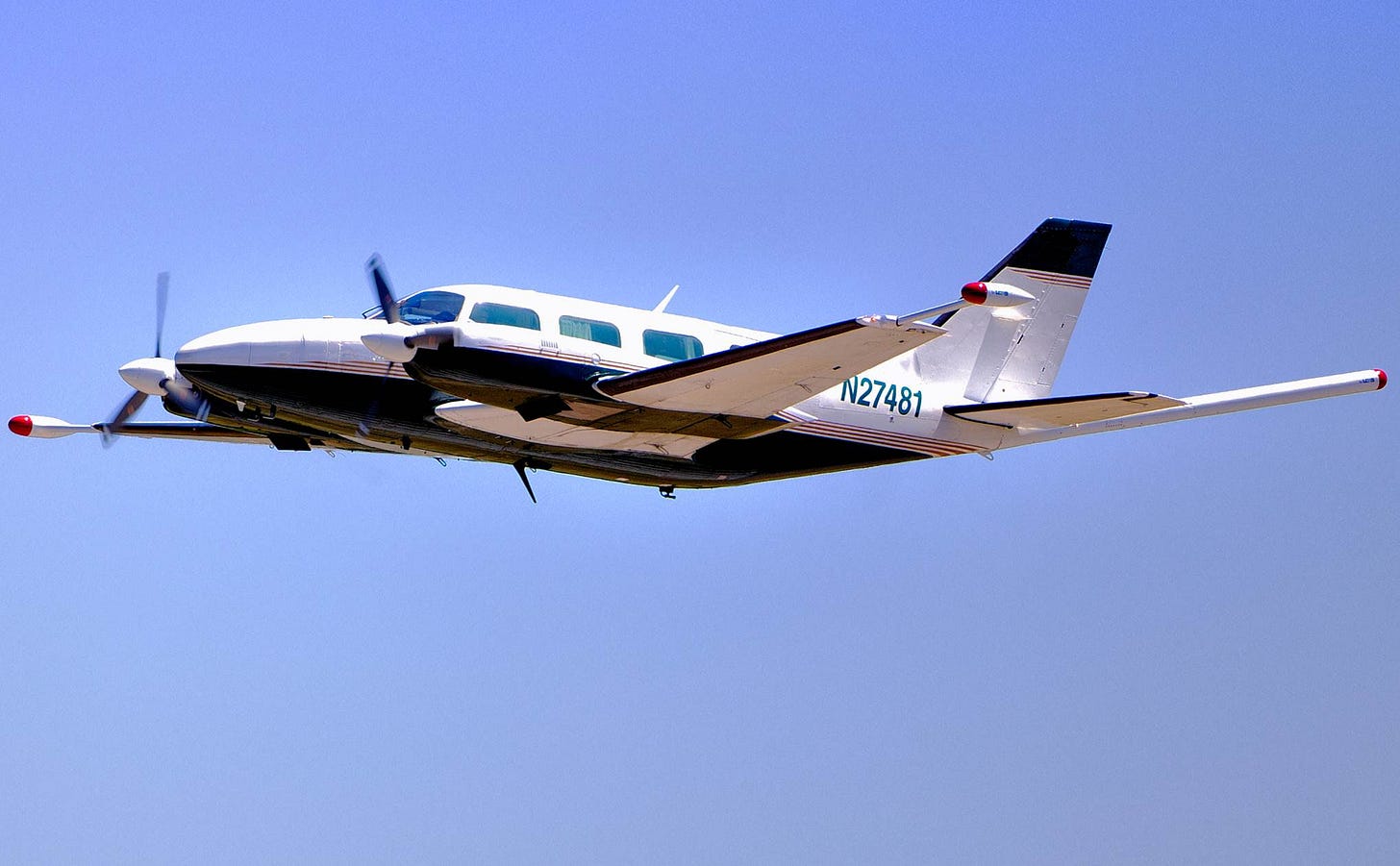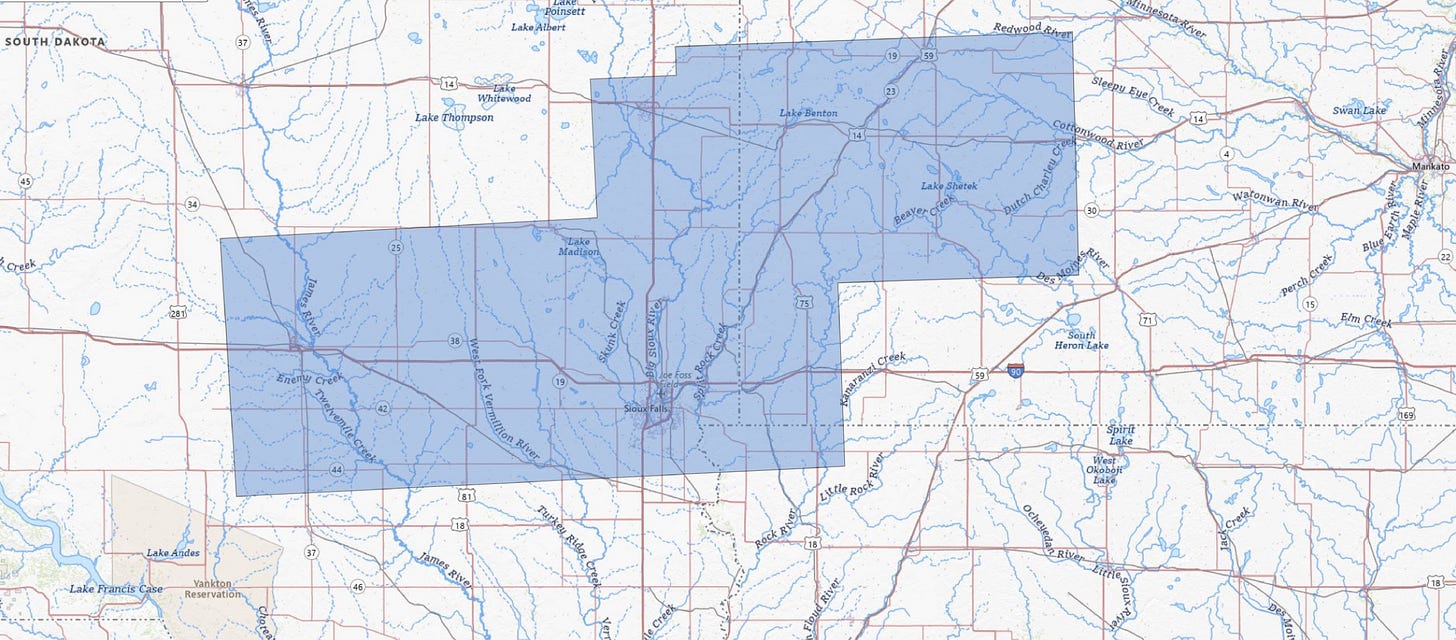Federal agency sending planes to photograph southeast South Dakota
USGS low-level airplane surveys beginning this month
Low-level airplane flights are planned over the Sioux Falls region of southeastern South Dakota, southwestern Minnesota, and northwestern Iowa to image geology using airborne geophysical technology.
The survey will begin in the fall of 2024, pause over the winter, and resume in the spring or summer of 2025, weather and other restrictions permitting, the United States Geological Survey announced Friday.
Flights will cover areas within the South Dakota counties of Brookings, Davison, Douglas, Hanson, Hutchison, Lake, Lincoln, McCook, Miner, Minnehaha, Moody, Sanborn, and Turner; Minnesota counties of Cottonwood, Lincoln, Lyon, Murray, Pipestone, Redwood, and Rock; and Lyon County in Iowa.
The flights will be based out of airports in the region, and could shift with little warning to other parts of the survey area as necessitated by adverse flying conditions, according to a news release.
The stated purpose of the survey is to provide images that expand the fundamental knowledge of geology underlying the region. The region has potential for undiscovered deposits of critical minerals, which are important in numerous applications related to national security and energy generation.
According to USGS, airplanes will fly along pre-planned fight paths relatively low to the ground at about 330 feet (100 meters) above the surface.
The ground clearance will be increased to 1,000 feet (300+ meters) over populated areas and will comply with Federal Aviation Administration (FAA) regulations. Flights will follow lines spaced about 650 feet (200 meters) apart.
The survey will use airplanes equipped with an elongated “stinger” mounted to the underside of the cabin extending forward or backward of the aircraft. Instruments in the stinger and inside the cabin will measure variations in the Earth’s magnetic field and natural low-level gamma energy created by different rock types.
The scientific instruments on the aircraft are completely passive with no emissions that pose a risk to humans, animals, or plant life. No photography or video data will be collected. The data collected will be made freely available to the public once complete. The aircraft will be flown by experienced pilots who are specially trained and approved for low-level flying. The company works with the FAA to ensure flights are safe and in accordance with U.S. law. The surveys will be conducted during daylight hours only.
The region’s critical mineral potential is under-mapped. This survey was designed through close collaboration between the USGS and the South Dakota Geological Survey, Minnesota Geological Survey, and Iowa Geological Survey. Funding by the Bipartisan Infrastructure Law has facilitated coverage of a large area.
The new geophysical data will be processed to develop high-resolution three-dimensional representations of bedrock composition and structure to depths more than 3,280 feet (1 kilometer) below the surface.
The 3D models and maps are important for improving our understanding of critical mineral resource potential, water resources, groundwater pathways near legacy mining areas, parameters for infrastructure and land use planning, and potential risks of naturally occurring radon.
The survey fits into a broader effort by the USGS and many other state geological surveys and other partners, including private companies, academics and state and federal agencies to modernize our understanding of the Nation’s fundamental geologic framework and knowledge of mineral resources. This effort is known as the Earth Mapping Resources Initiative, and it includes airborne geophysical surveys like this one, geochemical reconnaissance surveys, topographic mapping using LiDAR technology, hyperspectral surveys, and geologic mapping projects.
The USGS is contracting with Sanborn Geospatial to collect data.

























Just happens to be the area of which the Carbon Pipeline is to be built. Always think of motives of why the federal government wants to take pictures of us, and our properties.
Seems like a precursor to taking private property for "security" purposes.